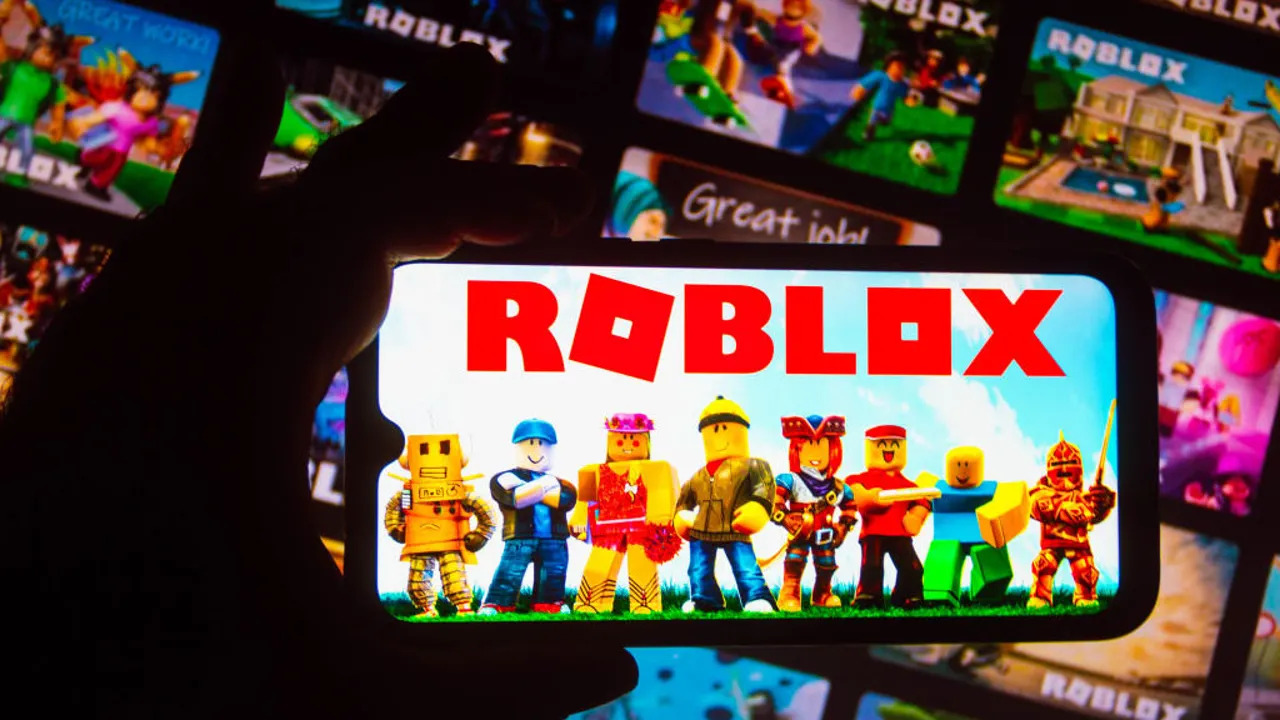In the ever-evolving world of holiday gift-giving, children’s wishes have undergone a significant transformation. Gone are the days of traditional toys and board games reigning supreme on their wish lists. Nowadays, it’s all about virtual currencies like Roblox Robux and Fortnite V-bucks, along with gaming subscriptions that unlock a world of digital adventure and creativity. This shift in preferences reflects the growing influence of the gaming industry and the digital economy on the younger generation.
The Robux Rush at Target
Nicole Randol, a mother of two from Missouri, discovered firsthand just how sought-after virtual gaming currency had become this holiday season. She excitedly shared on a popular Facebook parenting group that Target was offering a substantial 40% discount on Robux, the in-game currency for the widely popular Roblox platform. What followed was a frenzy of responses from nearly two hundred parents who rushed to the store to grab Robux cards or added them to their online shopping carts before stocks ran out.
Nicole Randol, who purchased two $100 Robux cards for her sons, ages 6 and 10, shared her excitement, saying, “I expect it to be the most exciting thing they open [on Christmas]. Because we always say ‘no,’ they are going to be very surprised. The most they hoped to get and asked for was $20 worth.”
This phenomenon is not unique to the Randol family; many young people this holiday season are expressing a strong desire for virtual currency over physical video games and traditional toys. Games like Roblox and Fortnite have reported staggering user numbers, with Roblox alone boasting 70.2 million average daily users in November, marking a 20% increase from the previous year. Rival platforms like Fortnite and Minecraft have also held their ground, captivating children and teens who spend billions of hours exploring these virtual worlds.
The Preference for Virtual Currency
A recent study by the Entertainment Software Association sheds light on this trend. The study found that the majority of children and teenagers aged 10 to 17 expressed a desire for video game-related gifts for the holidays. These desires included video game subscriptions (39%), gaming consoles (38%), gaming accessories (32%), and in-game currency (29%), all of which surpassed the demand for physical video games (22%).
What makes virtual gaming currency so appealing is that it not only allows users to purchase virtual items for their avatars, such as clothing and accessories but also enables them to create and sell these items within the virtual ecosystem. This economy within the gaming world mimics the ‘freemium’ model seen in app-based games, effectively keeping players engaged and invested in the game.
While Roblox declined to share specific data on Robux sales for this holiday season, the trend extends to other gaming platforms as well. Companies like Epic Games, the parent company of Fortnite, and Microsoft’s Xbox Game Pass have experienced growing popularity in their subscription services. Additionally, Google’s cloud gaming service, Stadia Pro, and Apple Arcade offer alternative gaming experiences for a monthly fee, reflecting the industry’s shift towards digital content consumption.
Michael Inouye, an analyst with ABI Research, notes, “Both subscriptions and digital currencies have been popular in the past years. Subscription services, due to more recent additions of premium tiers, likely have seen more interest than previous years, especially now that they carry a higher annual price tag.”
Challenges Amidst the Holiday Season
The surge in demand for virtual gaming currency and subscriptions comes at a time when traditional toy sales during the holiday season are expected to decline. Economic challenges and a focus on essential purchases have affected the holiday spending landscape. According to the National Retail Federation, over 60% of the US population, or approximately 200.4 million people, shopped during the five-day period spanning Thanksgiving to Cyber Monday. However, the average consumer spent significantly less, approximately $227, compared to the record average of $361 spent on holiday purchases in 2019.
The Rise of “Cozy” Games
Beyond virtual currency and subscriptions, another notable trend in the gaming industry is the rise of “cozy” games. These non-competitive and non-aggressive titles offer players a chance to explore immersive worlds and relax. The gaming experience has also evolved, with advancements in consoles like Nintendo’s WarriorWare, which encourages physical activity and competition.
ESA reports that more than 212 million Americans regularly play video games, showcasing the widespread appeal of gaming in modern society. Many retailers are capitalizing on this trend by offering gaming consoles at discounted prices, along with bundle deals that quickly fly off the shelves.
Jim Silver, editor-in-chief of toy reviews site TTPM, observes that popular toy brands such as Barbie, Lego, Hot Wheels, Squishmallows, and LOL are still in high demand. New and innovative items like Spinmaster’s Bitzies and the reintroduction of Furby are also gaining attention. However, the growing prominence of subscriptions and gaming currency suggests that the gifts under the Christmas tree this year might be smaller in size but larger in virtual adventures.
As the holiday season approaches, it’s evident that the landscape of children’s wishes is evolving. Virtual gaming currency and subscriptions have become key players on their wish lists, reflecting the growing influence of the gaming industry. While traditional toys and games still hold their charm, the digital world is increasingly shaping the way kids play and engage with entertainment. This holiday season, parents will find themselves navigating both the tangible and virtual realms to fulfill their children’s desires.
So, whether it’s a stack of Robux cards or a subscription to a gaming service, the spirit of giving has taken on a digital twist, offering children new avenues of fun and creativity in the virtual realms they love.























+ There are no comments
Add yours